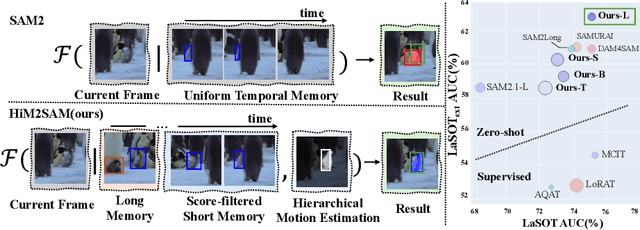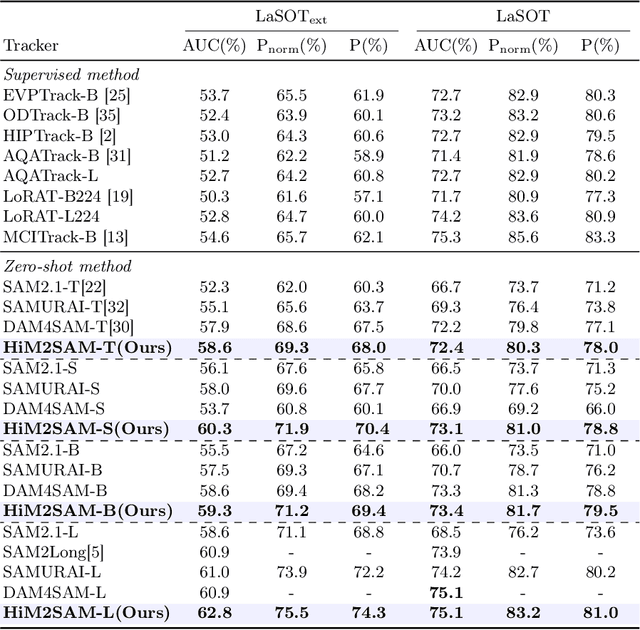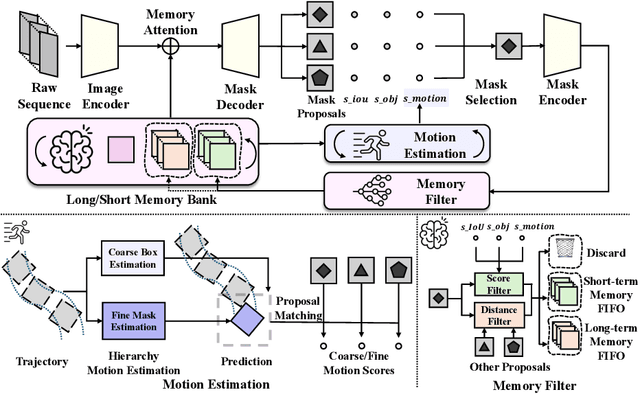Luca Benini
D-ITET, ETH Zürich, Switzerland
Wearable and Ultra-Low-Power Fusion of EMG and A-Mode US for Hand-Wrist Kinematic Tracking
Oct 02, 2025Abstract:Hand gesture recognition based on biosignals has shown strong potential for developing intuitive human-machine interaction strategies that closely mimic natural human behavior. In particular, sensor fusion approaches have gained attention for combining complementary information and overcoming the limitations of individual sensing modalities, thereby enabling more robust and reliable systems. Among them, the fusion of surface electromyography (EMG) and A-mode ultrasound (US) is very promising. However, prior solutions rely on power-hungry platforms unsuitable for multi-day use and are limited to discrete gesture classification. In this work, we present an ultra-low-power (sub-50 mW) system for concurrent acquisition of 8-channel EMG and 4-channel A-mode US signals, integrating two state-of-the-art platforms into fully wearable, dry-contact armbands. We propose a framework for continuous tracking of 23 degrees of freedom (DoFs), 20 for the hand and 3 for the wrist, using a kinematic glove for ground-truth labeling. Our method employs lightweight encoder-decoder architectures with multi-task learning to simultaneously estimate hand and wrist joint angles. Experimental results under realistic sensor repositioning conditions demonstrate that EMG-US fusion achieves a root mean squared error of $10.6^\circ\pm2.0^\circ$, compared to $12.0^\circ\pm1^\circ$ for EMG and $13.1^\circ\pm2.6^\circ$ for US, and a R$^2$ score of $0.61\pm0.1$, with $0.54\pm0.03$ for EMG and $0.38\pm0.20$ for US.
A Parallel Ultra-Low Power Silent Speech Interface based on a Wearable, Fully-dry EMG Neckband
Sep 26, 2025Abstract:We present a wearable, fully-dry, and ultra-low power EMG system for silent speech recognition, integrated into a textile neckband to enable comfortable, non-intrusive use. The system features 14 fully-differential EMG channels and is based on the BioGAP-Ultra platform for ultra-low power (22 mW) biosignal acquisition and wireless transmission. We evaluate its performance on eight speech commands under both vocalized and silent articulation, achieving average classification accuracies of 87$\pm$3% and 68$\pm$3% respectively, with a 5-fold CV approach. To mimic everyday-life conditions, we introduce session-to-session variability by repositioning the neckband between sessions, achieving leave-one-session-out accuracies of 64$\pm$18% and 54$\pm$7% for the vocalized and silent experiments, respectively. These results highlight the robustness of the proposed approach and the promise of energy-efficient silent-speech decoding.
ListenToJESD204B: A Lightweight Open-Source JESD204B IP Core for FPGA-Based Ultrasound Acquisition systems
Aug 20, 2025Abstract:The demand for hundreds of tightly synchronized channels operating at tens of MSPS in ultrasound systems exceeds conventional low-voltage differential signaling links' bandwidth, pin count, and latency. Although the JESD204B serial interface mitigates these limitations, commercial FPGA IP cores are proprietary, costly, and resource-intensive. We present ListenToJESD204B, an open-source receiver IP core released under a permissive Solderpad 0.51 license for AMD Xilinx Zynq UltraScale+ devices. Written in synthesizable SystemVerilog, the core supports four GTH/GTY lanes at 12.8 Gb/s and provides cycle-accurate AXI-Stream data alongside deterministic Subclass~1 latency. It occupies only 107 configurable logic blocks (approximately 437 LUTs), representing a 79\% reduction compared to comparable commercially available IP. A modular data path featuring per-lane elastic buffers, SYSREF-locked LMFC generation, and optional LFSR descrambling facilitates scaling to high lane counts. We verified protocol compliance through simulation against the Xilinx JESD204C IP in JESD204B mode and on hardware using TI AFE58JD48 ADCs. Block stability was verified by streaming 80 MSPS, 16-bit samples over two 12.8 Gb/s links for 30 minutes with no errors.
A 66-Gb/s/5.5-W RISC-V Many-Core Cluster for 5G+ Software-Defined Radio Uplinks
Aug 08, 2025Abstract:Following the scale-up of new radio (NR) complexity in 5G and beyond, the physical layer's computing load on base stations is increasing under a strictly constrained latency and power budget; base stations must process > 20-Gb/s uplink wireless data rate on the fly, in < 10 W. At the same time, the programmability and reconfigurability of base station components are the key requirements; it reduces the time and cost of new networks' deployment, it lowers the acceptance threshold for industry players to enter the market, and it ensures return on investments in a fast-paced evolution of standards. In this article, we present the design of a many-core cluster for 5G and beyond base station processing. Our design features 1024, streamlined RISC-V cores with domain-specific FP extensions, and 4-MiB shared memory. It provides the necessary computational capabilities for software-defined processing of the lower physical layer of 5G physical uplink shared channel (PUSCH), satisfying high-end throughput requirements (66 Gb/s for a transition time interval (TTI), 9.4-302 Gb/s depending on the processing stage). The throughput metrics for the implemented functions are ten times higher than in state-of-the-art (SoTA) application-specific instruction processors (ASIPs). The energy efficiency on key NR kernels (2-41 Gb/s/W), measured at 800 MHz, 25 {\deg}C, and 0.8 V, on a placed and routed instance in 12-nm CMOS technology, is competitive with SoTA architectures. The PUSCH processing runs end-to-end on a single cluster in 1.7 ms, at <6-W average power consumption, achieving 12 Gb/s/W.
HiM2SAM: Enhancing SAM2 with Hierarchical Motion Estimation and Memory Optimization towards Long-term Tracking
Jul 10, 2025



Abstract:This paper presents enhancements to the SAM2 framework for video object tracking task, addressing challenges such as occlusions, background clutter, and target reappearance. We introduce a hierarchical motion estimation strategy, combining lightweight linear prediction with selective non-linear refinement to improve tracking accuracy without requiring additional training. In addition, we optimize the memory bank by distinguishing long-term and short-term memory frames, enabling more reliable tracking under long-term occlusions and appearance changes. Experimental results show consistent improvements across different model scales. Our method achieves state-of-the-art performance on LaSOT and LaSOText with the large model, achieving 9.6% and 7.2% relative improvements in AUC over the original SAM2, and demonstrates even larger relative gains on smaller models, highlighting the effectiveness of our trainless, low-overhead improvements for boosting long-term tracking performance. The code is available at https://github.com/LouisFinner/HiM2SAM.
EdgeCodec: Onboard Lightweight High Fidelity Neural Compressor with Residual Vector Quantization
Jul 08, 2025Abstract:We present EdgeCodec, an end-to-end neural compressor for barometric data collected from wind turbine blades. EdgeCodec leverages a heavily asymmetric autoencoder architecture, trained with a discriminator and enhanced by a Residual Vector Quantizer to maximize compression efficiency. It achieves compression rates between 2'560:1 and 10'240:1 while maintaining a reconstruction error below 3%, and operates in real time on the GAP9 microcontroller with bitrates ranging from 11.25 to 45 bits per second. Bitrates can be selected on a sample-by-sample basis, enabling on-the-fly adaptation to varying network conditions. In its highest compression mode, EdgeCodec reduces the energy consumption of wireless data transmission by up to 2.9x, significantly extending the operational lifetime of deployed sensor units.
WaveFormer: A Lightweight Transformer Model for sEMG-based Gesture Recognition
Jun 12, 2025Abstract:Human-machine interaction, particularly in prosthetic and robotic control, has seen progress with gesture recognition via surface electromyographic (sEMG) signals.However, classifying similar gestures that produce nearly identical muscle signals remains a challenge, often reducing classification accuracy. Traditional deep learning models for sEMG gesture recognition are large and computationally expensive, limiting their deployment on resource-constrained embedded systems. In this work, we propose WaveFormer, a lightweight transformer-based architecture tailored for sEMG gesture recognition. Our model integrates time-domain and frequency-domain features through a novel learnable wavelet transform, enhancing feature extraction. In particular, the WaveletConv module, a multi-level wavelet decomposition layer with depthwise separable convolution, ensures both efficiency and compactness. With just 3.1 million parameters, WaveFormer achieves 95% classification accuracy on the EPN612 dataset, outperforming larger models. Furthermore, when profiled on a laptop equipped with an Intel CPU, INT8 quantization achieves real-time deployment with a 6.75 ms inference latency.
PhysioWave: A Multi-Scale Wavelet-Transformer for Physiological Signal Representation
Jun 12, 2025Abstract:Physiological signals are often corrupted by motion artifacts, baseline drift, and other low-SNR disturbances, which pose significant challenges for analysis. Additionally, these signals exhibit strong non-stationarity, with sharp peaks and abrupt changes that evolve continuously, making them difficult to represent using traditional time-domain or filtering methods. To address these issues, a novel wavelet-based approach for physiological signal analysis is presented, aiming to capture multi-scale time-frequency features in various physiological signals. Leveraging this technique, two large-scale pretrained models specific to EMG and ECG are introduced for the first time, achieving superior performance and setting new baselines in downstream tasks. Additionally, a unified multi-modal framework is constructed by integrating pretrained EEG model, where each modality is guided through its dedicated branch and fused via learnable weighted fusion. This design effectively addresses challenges such as low signal-to-noise ratio, high inter-subject variability, and device mismatch, outperforming existing methods on multi-modal tasks. The proposed wavelet-based architecture lays a solid foundation for analysis of diverse physiological signals, while the multi-modal design points to next-generation physiological signal processing with potential impact on wearable health monitoring, clinical diagnostics, and broader biomedical applications.
RobotxR1: Enabling Embodied Robotic Intelligence on Large Language Models through Closed-Loop Reinforcement Learning
May 06, 2025Abstract:Future robotic systems operating in real-world environments will require on-board embodied intelligence without continuous cloud connection, balancing capabilities with constraints on computational power and memory. This work presents an extension of the R1-zero approach, which enables the usage of low parameter-count Large Language Models (LLMs) in the robotic domain. The R1-Zero approach was originally developed to enable mathematical reasoning in LLMs using static datasets. We extend it to the robotics domain through integration in a closed-loop Reinforcement Learning (RL) framework. This extension enhances reasoning in Embodied Artificial Intelligence (Embodied AI) settings without relying solely on distillation of large models through Supervised Fine-Tuning (SFT). We show that small-scale LLMs can achieve effective reasoning performance by learning through closed-loop interaction with their environment, which enables tasks that previously required significantly larger models. In an autonomous driving setting, a performance gain of 20.2%-points over the SFT-based baseline is observed with a Qwen2.5-1.5B model. Using the proposed training procedure, Qwen2.5-3B achieves a 63.3% control adaptability score, surpassing the 58.5% obtained by the much larger, cloud-bound GPT-4o. These results highlight that practical, on-board deployment of small LLMs is not only feasible but can outperform larger models if trained through environmental feedback, underscoring the importance of an interactive learning framework for robotic Embodied AI, one grounded in practical experience rather than static supervision.
Real-Time, Single-Ear, Wearable ECG Reconstruction, R-Peak Detection, and HR/HRV Monitoring
May 03, 2025Abstract:Biosignal monitoring, in particular heart activity through heart rate (HR) and heart rate variability (HRV) tracking, is vital in enabling continuous, non-invasive tracking of physiological and cognitive states. Recent studies have explored compact, head-worn devices for HR and HRV monitoring to improve usability and reduce stigma. However, this approach is challenged by the current reliance on wet electrodes, which limits usability, the weakness of ear-derived signals, making HR/HRV extraction more complex, and the incompatibility of current algorithms for embedded deployment. This work introduces a single-ear wearable system for real-time ECG (Electrocardiogram) parameter estimation, which directly runs on BioGAP, an energy-efficient device for biosignal acquisition and processing. By combining SoA in-ear electrode technology, an optimized DeepMF algorithm, and BioGAP, our proposed subject-independent approach allows for robust extraction of HR/HRV parameters directly on the device with just 36.7 uJ/inference at comparable performance with respect to the current state-of-the-art architecture, achieving 0.49 bpm and 25.82 ms for HR/HRV mean errors, respectively and an estimated battery life of 36h with a total system power consumption of 7.6 mW. Clinical relevance: The ability to reconstruct ECG signals and extract HR and HRV paves the way for continuous, unobtrusive cardiovascular monitoring with head-worn devices. In particular, the integration of cardiovascular measurements in everyday-use devices (such as earbuds) has potential in continuous at-home monitoring to enable early detection of cardiovascular irregularities.
 Add to Chrome
Add to Chrome Add to Firefox
Add to Firefox Add to Edge
Add to Edge